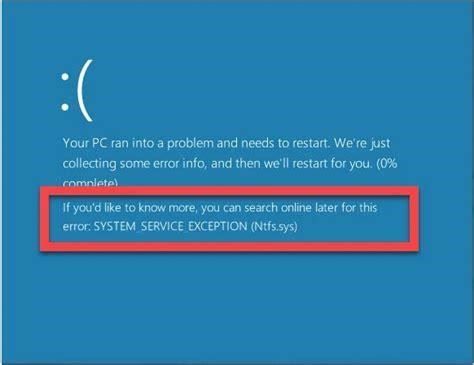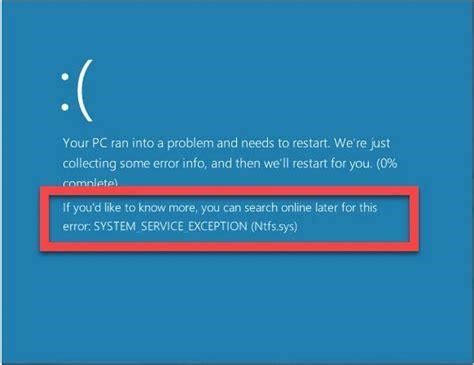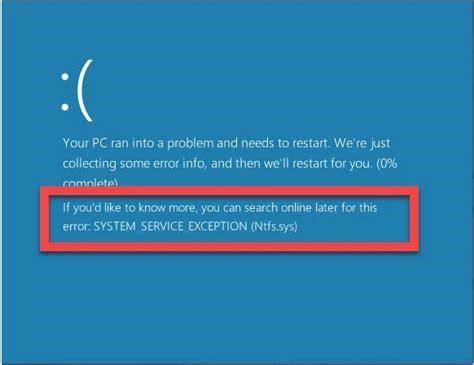Troubleshooting and Fixing the Blue Screen of Death on Windows Gaming PCs
As avid gamers, we’ve all experienced the dreaded blue screen of death (BSOD) when playing graphics-intensive games on our Windows PCs. Nothing kills the gaming buzz faster than having your screen suddenly turn blue and display an obscure STOP error code.
In this guide, we’ll draw from insightful discussions amongst gaming enthusiasts to explore what causes these fatal crashes, how to diagnose the issues, and most importantly – how to resolve them to get back to uninterrupted gaming.
Pinpointing What Triggers the Gaming BSOD
BSOD errors can stem from various hardware, software, and configuration problems. Here are some of the most common culprits:
Hardware Faults
Defective or incompatible components like RAM, GPUs, and storage drives often lead to blue screens. For example, a BSOD error following a RAM upgrade likely indicates incompatible memory modules.
How do I reinstall gaming services on Windows 10/11?
Reinstall the Gaming Services app on your Windows 10/11 device: Select the Search icon on the taskbar, type powershell, right-click on Windows PowerShell, and then select Run as administrator. In Windows PowerShell, type the following command and press Enter: In the same window, type the following command and press Enter:
Does Windows 11 have game mode?
Windows 11 also has Game Mode, and it’s found in Settings in the same location as the Windows 10 version. It also functions in the same way, by reducing background processes and focusing the resources on the game. While Windows 10 Game Mode won’t work for every game or every player, it doesn’t hurt to keep it enabled.
Insufficient cooling and accumulated dust can also cause overheating and system crashes. Finally, a faulty power supply that delivers unstable voltage levels can trigger the BSOD.
Software Bugs
Outdated, corrupted, or incompatible drivers are a prime BSOD cause, especially display and graphics drivers. Critical Windows updates may also introduce bugs that destabilize systems.
Finally, malware infections can modify critical system files and cause fatal errors.
Configuration Issues
Improperly connected components like storage drives and video cards can trigger blue screens after being jarred or disturbed.
Overclocking components beyond stable levels is another common factor we see amongst gaming enthusiasts.
Analyzing Minidump Files to Diagnose BSOD Issues
When a blue screen occurs, Windows automatically generates a memory dump file with details about the crash. By analyzing the minidump file with debugging tools like WinDBG, we can pinpoint the driver or component responsible for the error.
For example, the minidump may reveal the culprit as an outdated display driver like "igdkmd64.sys" or a third-party anti-cheat driver. This insight makes troubleshooting much easier.
What’s new in Windows 10 kb5004296 preview?
Microsoft has released the optional KB5004296 Preview cumulative update for Windows 10 2004, Windows 10 20H2, and Windows 10 21H1. This update fixes Windows 10 gaming issues that have been plaguing users since March.
Does Windows 10 kb5004296 Fix Gaming problems?
In April, Microsoft released a Known Issue Rollback (KIR) to Windows 10 users to resolve the gaming issues, but the problems persisted for many users. Today, as part of the KB5004296 update, Microsoft has now fixed an issue that prevented power plans and game mode from working, caused lower FPS, and reduced performance for gamers.
How to improve gaming performance Windows 10?
Choose Gaming in the Windows Settings, then click Game Mode. Enable the Game Mode Switch on. Upon doing so, your PC will run in Game Mode, optimizing its gaming performance. 6 – Monitor your GPU’s temperature. As stated earlier, your GPU is responsible for generating the graphics of your video games on your monitor.
Effective Ways to Stop BSOD Crashes While Gaming
With the cause identified, we can now move to applying fixes. Here are some reliable troubleshooting steps:
Update Drivers
Always keep graphics card drivers updated using the manufacturer’s software (Nvidia GeForce Experience, AMD Adrenalin, etc.). Also update storage, network, and other critical drivers.
Uninstall Recent Windows Updates
If crashes started after a Windows update, try uninstalling the latest patches. Open Windows Update History and remove problematic updates.
Perform a Clean Reinstall of Graphics Drivers
Use Display Driver Uninstaller to fully clear existing drivers before reinstalling the latest versions clean. This resolves any corruption issues.
Run System File Checker
SFC scans Windows system files for errors and automatically restores corrupted files. Run "sfc /scannow" in an admin Command Prompt.
Check Temperatures
Use HWMonitor to check component temps before and during gaming sessions. Overheating hardware typically needs better cooling or thermal paste replacement.
Reseat Components and Cables
Open the case and firmly reseat RAM, graphics cards, storage drives, and cables impacted by movement or vibration.
Why can’t I install or update gaming services?
If you still can’t install or update Gaming Services, there may be an issue with Windows. You can install pending Windows Updates to see if that solves the problem. Press the Windows + I keyboard shortcut to open the Settings app. In the Windows Update tab, click the Check for updates button.
Does Microsoft Game mode improve PC gaming performance?
Because it means Microsoft is actively working to improve PC gaming performance by building optimization tools directly into Windows 10. There might not be very much the Microsoft Game Mode team can do on the OS side of things to improve your PC gaming performance, but that doesn’t mean they shouldn’t try.
When All Else Fails: Clean Install Windows
For recurring BSODs likely caused by an elusive software gremlin, backup data and perform a clean install of Windows as a last resort.
Prevent Future Gaming Crashes
Complement the above fixes with a few preventive measures:
- Keep Windows, drivers, and apps updated
- Install monitoring software like HWMonitor
- Periodically clean computer dust buildup
- Ensure your power supply has sufficient wattage headroom
- Replace aged hardware components like thermal paste
Enjoy Smooth PC Gaming with No More BSODs!
By methodically applying the above tips, we can banish blue screens and indulge in uninterrupted gaming sessions. Pay special attention to maintaining proper cooling, testing hardware stability, isolating faulty drivers, and keeping software updated.
With some diligence, we can avoid those jarring BSODs and maximize gaming enjoyment on our cherished Windows rigs. Let us know if you have any other tips for squashing blue screen errors!
Does Windows 10 have a game mode fix?
Yet. Microsoft has finally published the fix for Windows 10’s gaming issues (via BleepingComputer ), and you can download it right now. The company announced just over a week ago that it had fixed a problem with Game Mode, and certain power plans, that was resulting in dodgy gaming performance, and now we have it in our hands.
How do I disable gaming on Windows 10?
To disable this and improve gaming performance on Windows 10, start by checking your IP address: Hit the Windows key + X keys. Select Windows PowerShell. Type in “ipconfig” and hit Enter. With the IP address noted, it’s time to edit the Windows Registry.
How do I install a game on Windows 10?
In Windows PowerShell, type the following command and press Enter: In the same window, type the following command and press Enter: Install the app on that page and select Yes when you receive the User Account Control (UAC) prompt. Restart your device and try to install the game again.




